Description
The Two Spot Goby, Signigobius biocellatus, Also goes by the name Eye Spot Goby. This is a small and captivating fish that reaches a maximum size of approximately 2.5 inches (6.35 centimetres). It showcases a slender body with a distinct pattern of stripes and spots. One of its most notable features is the two large dark spots on its dorsal fin, which resemble eyes. These spots serve as a defence mechanism to confuse potential predators.
Natural Habitat
Two Spot Goby – biocellatus inhabit shallow coastal regions and reef flats within their natural habitat. They prefer sandy or rubble substrates, often surrounded by coral or rocky formations. These areas provide them with ample hiding places, such as crevices and small caves. The Gobies thrive in warm tropical waters with temperatures ranging from 75 to 82 degrees Fahrenheit (24 to 28 degrees Celsius).
Keeping Two Spot Goby – biocellatus Healthy:
Two Spot Gobies – biocellatus, or Eye Spot Gobies have a moderate care level and are suitable for intermediate aquarists. Maintaining their health involves providing a well-established marine aquarium with a capacity of at least 20 gallons. The water parameters should be closely monitored, maintaining a pH level between 8.1 and 8.4 and a salinity level of 1.023 to 1.025. It is essential to ensure stable water conditions, including appropriate filtration and regular water changes.
Special Requirements and Feeding
These gobies have a specialized diet consisting of small crustaceans and zooplankton. They may also consume small worms and other tiny invertebrates. To replicate their natural feeding habits, it is recommended to offer a varied diet in the home aquarium. This can include high-quality frozen or live foods such as brine shrimp, mysis shrimp, and copepods. It is essential to feed them small portions multiple times a day to meet their dietary needs.
How Many Should I Keep?
Two Spot Gobies – biocellatus are generally peaceful and can be kept as a solitary specimen or in small groups. If multiple gobies are desired, it is crucial to provide sufficient space for each individual, as they can become territorial. A general rule of thumb is to allow approximately 10 gallons per goby to ensure their well-being and minimize any potential conflicts.
Lighting Preference
Two Spot Gobies – biocellatus thrive in aquariums with moderate lighting. It is recommended to provide a combination of subdued lighting and shaded areas to mimic their natural habitat. This will create a comfortable environment for the gobies and promote their natural behaviours.
Suitable Tank Mates
Two Spot Gobies – biocellatus are generally peaceful and can coexist with a variety of tank mates. However, caution should be exercised when selecting tank mates to ensure compatibility. Small, peaceful fish, such as other gobies, clownfish, and certain species of blennies, make suitable companions. Avoid aggressive or territorial fish that may intimidate or harm the gobies.
Reproduction in the Wild
Two Spot Gobies – biocellatus, engage in fascinating reproductive behaviours in their natural habitat. These gobies are oviparous, meaning they reproduce by laying eggs. In the wild, their reproductive process involves intricate courtship rituals, spawning, and the subsequent rearing of their offspring.
Breeding Signigobius biocellatus:
- Set-up:
To encourage breeding, create a dedicated breeding tank with a capacity of at least 10 gallons. The tank should have a sandy substrate, numerous hiding places, and subdued lighting. Maintain the water temperature at around 79 to 82 degrees Fahrenheit (26 to 28 degrees Celsius) and the salinity at 1.023 to 1.025.
- Courtship/Spawning:
A pair of Two Spot Gobies – biocellatus will engage in an elaborate courtship dance. The male displays vibrant colours and performs intricate movements to attract the female. The pair will then rise together towards the water’s surface, where the female releases her eggs while the male simultaneously releases his sperm. The eggs are fertilized in the water column and subsequently settle on the substrate.
- Rearing:
After spawning, it is crucial to remove the adults from the breeding tank to prevent them from consuming the eggs. The eggs will hatch within 7 to 10 days, and the tiny larvae will start to swim actively. At this point, providing suitable food, such as rotifers and copepods, is essential for the survival and growth of the fry. Regular water changes and careful monitoring of water parameters are crucial during the rearing process.
Sexual Dimorphism
Two Spot Gobies – biocellatus do not exhibit significant sexual dimorphism. Both males and females possess similar colouration and markings. However, during the breeding period, the male intensifies his vibrant colours and performs elaborate courtship displays to attract the female.
Distribution
Signigobius biocellatus is naturally found in the Indo-Pacific region, specifically in areas such as Indonesia, Malaysia, and the Philippines. While captive-bred and line-bred strains may exist, the original wild-caught fish are native to these regions.
Summary
Two Spot Gobies, or Eye Spot Goby, or Signigobius biocellatus, showcases fascinating reproductive behaviours in its natural habitat. With careful attention to tank setup, courtship rituals, and rearing techniques, aquarists can successfully breed these gobies in a dedicated breeding tank. It is important to note that the original fish are native to the Indo-Pacific region, with captive-bred strains possibly available in the aquarium trade. Breeding Eye Spot Gobies can be a rewarding experience for aquarists interested in observing the intricacies of their reproductive behaviour.
The Fish pictured here are representative only and the livestock you receive may vary in pattern, coloration, and shape.

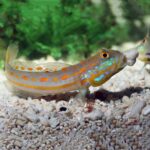

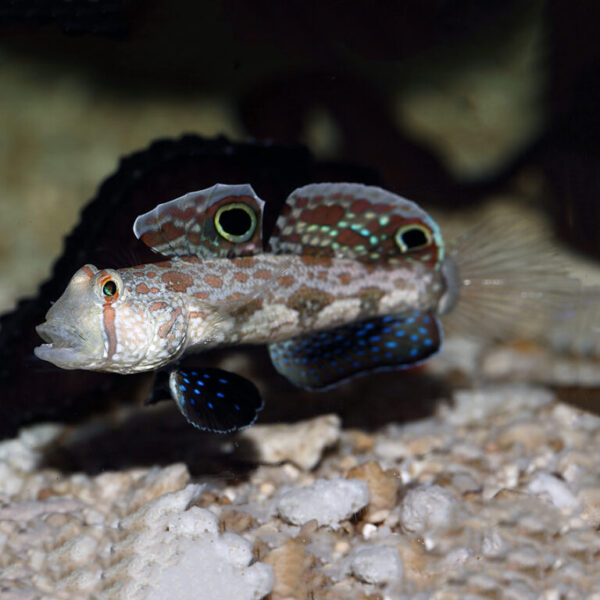

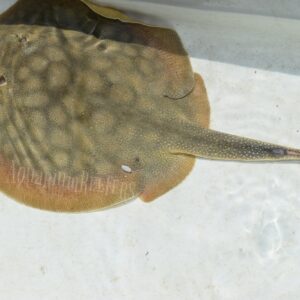
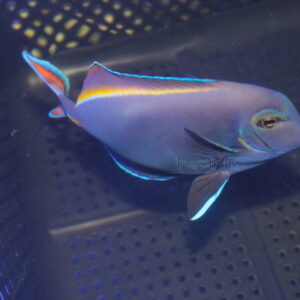
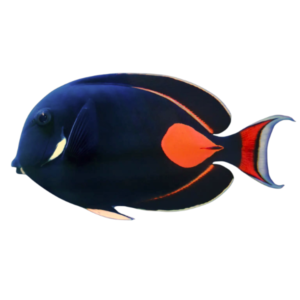

Reviews
There are no reviews yet.